Harold Davis's Blog, page 206
March 31, 2013
New Harold Davis Workshops, Events, and Webinars Too!
Full Moon Golden Gate Workshops in June 2013
I’m pleased to announce two new June sessions of our Full Moon Workshop: Photograph the Golden Gate Bridge Like You Never Have Before.
Saturday June 22 (two spaces available), information and registration: http://www.meetup.com/Harold-Davis/events/110974782/
Sunday June 23 (four spaces available), information and registration: http://www.meetup.com/Harold-Davis/events/110975982/

Golden Gate Moonrise © Harold Davis
What participants have said about previous Harold Davis full moon Golden Gate workshops:
“The workshop was wonderful!!! Harold is a fantastic teacher and photographer. I love the small group size as it allows everyone to ask questions and get the help they need to learn.”
“Fun, informative, well organized. I had good time and got some great photos. Harold really knows where to go to get the shots you want.”
“Very helpful to have the evening planned on where to go and what settings might work.”
“Very enjoyable and informative session….Shooting the bridge after sunset resulted in spectacular images, as did the reflections of moonlight on the water.”
“What a great experience! The small group, the individual attention from Harold, the incedible locations, and to top it all off – the most perfect weather anyone could possibly want surrounding the Golden Gate Bridge. The entire event was so well organized and executed.”
Night Photography Webinars
Two new Harold Davis webinars of interest specifically to night photographers, sponsored by Star Circle Academy, are now open for registration.
Thursday April 18, 2013 at 6:30PM PT, Composition in Night Photography, details and registration: http://events.starcircleacademy.com/events/110719152/
This webinar addresses the compositional issues that are unique to night photography with the goal of helping you to create stunning night photos. Topics addressed include:
Understanding the wide range of possible night photography targets
Using underexposure to your benefit
Knowing when “day for night” is right
Solving “unsolvable” night photography exposure problems
Using exposure time as an element in creative night photo compositions
Creating riveting and compelling night photography images
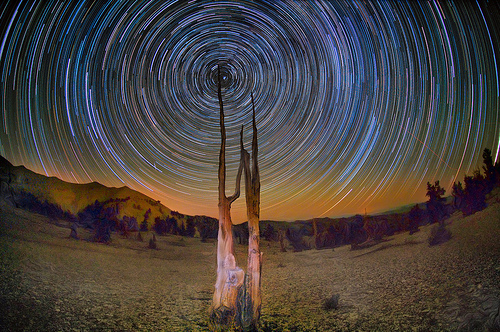
Ancient Music of the Stars © Harold Davis
Thursday May 23, 2013 at 6:30 PM PT, Creative Night Photography Post-Production, details and registration: http://events.starcircleacademy.com/events/110716882/
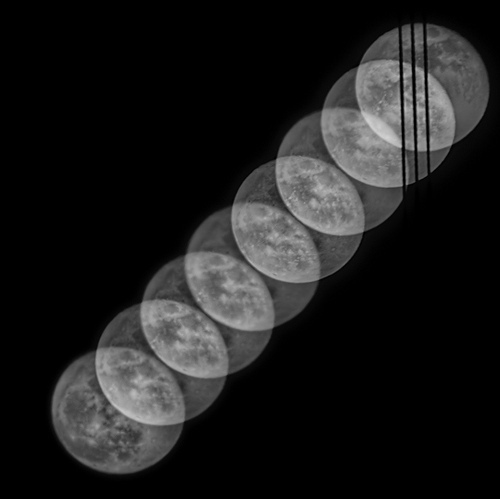
Full Moon Rising © Harold Davis
Remembering Jack Tasoff
We are sponsoring a free photo shoot in honor of the memory of Jack Tasoff, a member of the Photography with Harold Davis Meetup group, on Sunday June 2, 2013. If you knew Jack, or just want to honor his memory doing something he loved (photographing animals) please consider joining us. Details: http://www.meetup.com/Harold-Davis/events/110726082/. Read more about Jack Tasoff on my blog.
Seeing the Light © Harold Davis
Photographing Flowers for Transparency (two-day workshop)
Master photographer Harold Davis is well-known for his often imitated—but seldom equaled—digital images of luscious transparent and translucent flowers.
In this unique workshop offering master photographer Harold Davis shows the techniques he uses to create his floral masterpieces. Arrangement, composition, photography, post-production will all be covered, as will Harold’s special techniques for shooting on a light box. In response to many requests, this workshop has been expanded to two days to allow participants to fully shoot and post-process their own images under Harold’s guidance. Limited to sixteen participants.
Saturday December 7, 2013 and Sunday December 8, 2013; We have folks coming from all over the country for this workshop here in Berkeley, California, but there are still some spaces left. Registration and info: http://www.meetup.com/Harold-Davis/events/96580162/
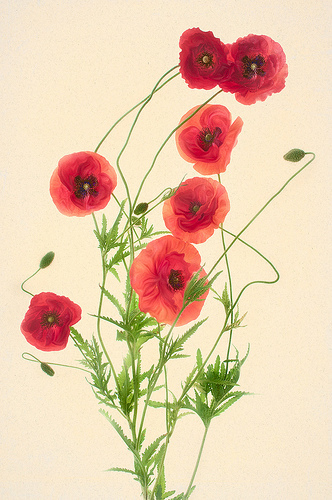
Red Poppies © Harold Davis
What folks have said about Harold Davis workshops and events:
“A great artist and speaker!”—W. Anglin
“Harold is genuine, generous, and gracious – He has a world of knowledge and expertise that he loves to share – his wonderful books show his monumental talents and skill set- his workshops shows the depth of his connecting with others in a very real and personal way.”—P. Borrelli
“Awesome! He patiently addressed questions from the audience which contained photographers of all levels , molding his answers to the level of understanding for each of us. His presentations covered a wonderful range of technical knowledge as well as emphasizing the need for images to have an emotional quality. The images he shares are breathtaking and he is generous in sharing many facets of how he captures such beauty.”—J. Phillips
“Not all photographers are good verbal communicators. Harold is someone who can DO and TEACH. A rare combination of talents.”—B. Sawyer
“Inspiring!”
“He was very giving of his talents and time. The course was very organized and thorough. Loved it! Learned so much!”—L. Beck
“Very creative and a marvelous instructor.”—Kay S.
About Harold Davis: Harold Davis is a professional photographer whose work is widely admired and collected. He is the author of many bestselling photography books. Harold Davis is a Moab printmaking Master. To learn more:
About Harold Davis
Bio
Books
Interviews, profiles and links
In the news
Press releases
Botanique

March 29, 2013
Smoking Gun
There’s one somewhat discordant element in this tableau of a metallurgic assayer’s desk, shot at Laws Railroad Museum near Bishop, California. What is the gun doing in the image?
According to the docent I spoke with, most assayers tended to deal in gold and other precious metals as well as to assay it. The natural tendency for miners hitting what passed for civilization out of their stakes in Death Valley or the Panamint Range was to want to get some ready money quickly—no doubt for some to spend on booze and women in wild boom towns like Bodie. These miners would often come to feel that they had been low-balled by assayers who had taken advantage of them; hence, a revolver to defend against disgruntled small mining stake-holders was standard equipment for most metallurgists.
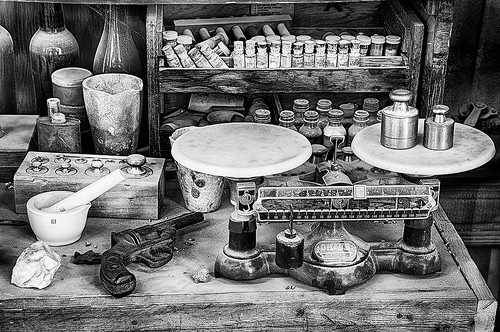
Assay © Harold Davis
Exposure data: 52mm, ten exposures at shutter speeds between 1/80 of a second and five seconds, each exposure at f/13 and ISO 200, tripod mounted; exposures combined using Nik HDR Efex Pro and Photoshop, and converted to monochromatic using Photoshop, Nik Silver Efex and Topaz Adjust.

March 26, 2013
Shell Spiral
This is a photo of a very small shell sometimes called a “Sundial” (of the architectonica genus). It is less than an inch across, and shown elsewhere on my blog in color.
My idea in making this photo was to create a monochromatic image that emphasize the contrast in the shell’s spiral between the white lines and the darker portions of the spiral, and implying the color gradations in the shell’s spiral, and the patterned nature of the shell as a whole.
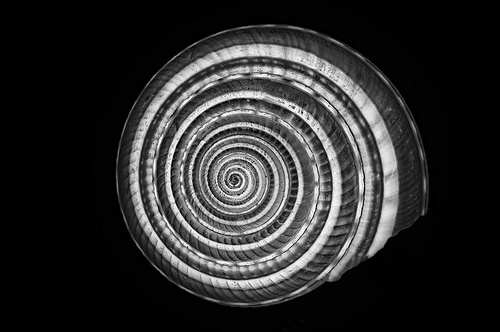
Shell Spiral © Harold Davis
Exposure data: 85mm macro lens, six exposures with shutter speeds ranging from 1/8 of a second to 4 seconds, each exposure at f/22 and ISO 100, tripod mounted; images combined in Photoshop, and converted to monochromatic using LAB inversions in Photoshop and Nik Silver Efex.

March 23, 2013
Botanique on the Moab Paper blog
In “Botanique”: Harold Davis’s Origami in a Box on the Moab Paper blog you’ll find a story about a mystery package. Here’s how the story begins: “A mysterious package arrived in our office the other day. After carefully unwrapping the paper, the most beautiful portfolio of images was unveiled.”
The story continues: “Acclaimed as ‘origami in a box,’ Botanique is a hand-made, limited edition artist book that astutely blends old craft and cutting edge new technologies to create an exquisite limited edition art book and art object that is completely unique. Holding a print of a delicate floral image printed on Moenkopi Unryu felt as though I was holding the actual flower. The portfolio shipped with white cotton gloves, which reinforced the book’s museum-quality.”
Thanks Moab Paper!
Read the full story on the Moab Paper blog; find out more about the Botanique limited edition artists book.

Botanique includes three oversize pull-outs like the Star Magnolia panorama shown on Unryu washi paper

Botanique on the Moab Paper blog
In “Botanique”: Harold Davis’s Origami in a Box on the Moab Paper blog you’ll find a story about a mystery package. Here’s how the story begins: “A mysterious package arrived in our office the other day. After carefully unwrapping the paper, the most beautiful portfolio of images was unveiled.”
The story continues: “Acclaimed as ‘origami in a box,’ Botanique is a hand-made, limited edition artist book that astutely blends old craft and cutting edge new technologies to create an exquisite limited edition art book and art object that is completely unique. Holding a print of a delicate floral image printed on Moenkopi Unryu felt as though I was holding the actual flower. The portfolio shipped with white cotton gloves, which reinforced the book’s museum-quality.”
Thanks Moab Paper!
Read the full story on the Moab Paper blog; find out more about the Botanique limited edition artists book.

Botanique includes three oversize pull-outs like the Star Magnolia panorama shown on Unryu washi paper
March 22, 2013
Dragon Dawn
In the Anza Borrego desert the hard-scrabble town of Borrego Springs, California loses most of its population in the summer, when temperatures soar and stay above 110 degrees Fahrenheit. One part of the indigenous population stays put—the creatures created by metal sculptor Ricardo Breceda. My favorite is the huge dragon,or serpent, shown here photographed at sunrise using my fisheye lens.

Dawn of the Dragon © Harold Davis
The serpent in the Anza-Borrego reminds me somewhat of the Serpent Mother (a creation of the Flaming Lotus Girls).

March 21, 2013
Making Tracks
There’s an almost infinite appeal to me in photographing railroad tracks—appropriately, because the visual metaphor of the railroad track is to show rails that are parallel and never touch. They go on forever, or seem to. So railroad tracks are, in other words, a representation of the infinite.

Railroad Tracks near Gaviota, California © Harold Davis
The crucial point in railroad track compositions is the vanishing point. The viewer’s eye will proceed along the tracks to the point at which the tracks seem to come together and vanish. Of course, the tracks never really come together, and a vanishing point is a trick of perspective rendition. But to do an effective job of making a railroad track image one needs to accomplish something interesting at the supposed vanishing point.
In my image of Railroad Tracks near Gaviota, California this interest is generated by the stormy sky, and by the bend to the right in the tracks towards the distant hills and beach.

March 20, 2013
Remembering Jack Tasoff
Recently, my friend and photography student Jack Tasoff died in a four-wheel-drive accident in a remote area of the Anza-Borrego desert.
I first met Jack a number of years ago. I was scouting a location for a photography workshop in the Patriarch Grove of ancient Bristlecone Pines in the White Mountains of eastern California. My camera was on a tripod, and I was shooting the textures and folds of the bark of one of these 4,000 year-old trees.
Jack came up to me and asked, “Do you know anything about the photography workshop that is going to be happening here in a few days?”
“Well,” I replied, “my name is Harold Davis, and I am leading the workshop.”
Jack looked at me and considered for a moment. Then he said, “Hm…I thought ‘Harold Davis’ would be lean and handsome like Calvin Klein, not an overweight patzer like the rest of us!”

Seeing the Light © Harold Davis
Those who knew and loved Jack probably realize that tact wasn’t his strong point. But as time went by, and Jack and I continued to correspond every week, I truly began to appreciate the breadth of his knowledge and insights, and how much he savored life. We discussed everything, from Ming vases and Titian paintings to botany, biology, and individual motivations. Every interaction with Jack was entertaining, and every discussion gave me unusual insights. Jack saw the world in his own way. He was a true original, and in my book no greater compliment can be made.
Jack had a gentle side. He could be loud, and carried a big lens, but he cared deeply about little creatures. He enjoyed most of all seeking out and photographing small, endangered animals.
I miss Jack already, and know that this sense of loss will only grow as time goes by. One consolation is that he was out doing two things he loved—photographing wild animals, and travelling in the desert. May his wonderful spirit find beauty and joy.
You can find some of Jack’s photography on his website wee tim’rous beasties.

March 19, 2013
Gnarled wood in the desert
In the desert life is harsh, and the intensity of light reflects the harshness of conditions. Photography is best at the fringes of the day—the “golden hour” leading up to sunset, the half hour just after sunset, and the half hour of comparatively serene light one finds at dawn.
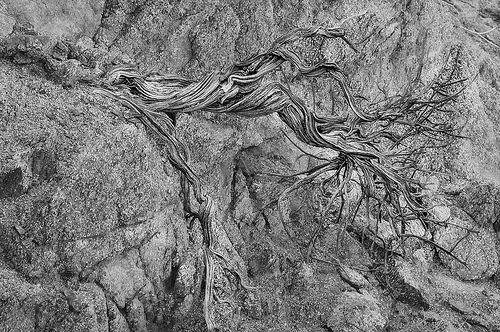
Gnarled Wood in the Desert © Harold Davis
I created this monochromatic HDR image shortly after sunrise in Glorieta Canyon, part of the Anza-Borrego Desert in southeastern California. To make the image I used my 200mm macro lens, and mounted my camera on a tripod. There were five exposures, shot at ISO 100 and f/16. Shutter speeds varied between 1/13 of a second (darkest) and 1.3 seconds (brightest).
The images were processed from the RAW using Adobe Camera RAW (ACR) and Nik HDR Efex Pro, then combined in Photoshop using layering. I used Photoshop, Nik Color Efex, Topaz Adjust, Topaz Simply, and PixelBender to enhance the image. Finally, I converted the image to monochromatic using Photoshop, Nik Silver Efex, and a “reserved” layer from the original HDR Efex monochromatic HDR processing.

March 7, 2013
Cayucos Pier
On a wet, sloppy evening with the tide coming in it was fun to photograph the old wooden pier in Cayucos, California. The sky darkened and the storm moved landward—it was a proverbial photofinish between how long the light would hold out and how long my exposures had to be. The one shown below was in fact exposed for 3 minutes. Shortly after it completed the rain began in earnest.

Cayucos Pier © Harod Davis




